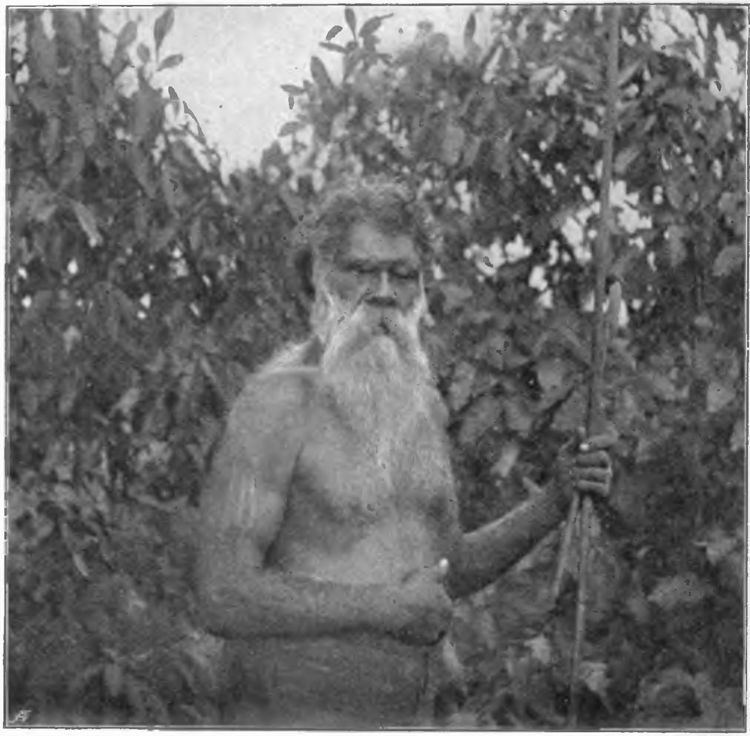 | ||
The Gunai (pronounced gun-eye) or Kurnai (cur-nye), often now referred to as the Gunaikurnai (gun-eye-cur-nye), is an Indigenous Australian nation of south-east Australia whose territory occupies most of present-day Gippsland and much of the southern slopes of the Victorian Alps. The Gunaikurnai nation is composed of five major clans. Many of the Gunaikurnai people resisted early European squatting and subsequent settlement during the nineteenth century, resulting in a number of deadly confrontations between Europeans and the Gunai/kurnai. There are about 3,000 Gunai/kurnai people alive today, predominantly living in Gippsland.
Contents
Creation story
It is told that the first Kurnai came down from the north west mountains, with his canoe on his head. He was known as Borun, the pelican. He crossed the Tribal River (where Sale now stands) and walked on into the west to Tarra Warackel (Port Albert). He heard a constant tapping sound, as he walked, but could not identify it. At the deep water of the inlets Borun put down his canoe and discovered, much to his surprise, there was a woman in it. She was Tuk, the musk duck. He was very happy to see her and she became his wife and the mother of the Gunaikurnai people.
In scientific terms, evidence of human occupation at Cloggs Cave near Buchan, has been dated at up to 17,000 years, while occupation at New Guinea Cave in the same area has been dated to over 20,000 years.
Tribal names
The name of this Aboriginal nation has been alternatively written in such forms as Gunai, Kurnai, Gunnai, and Ganai. As a compromise, the group is now often referred to as the Gunaikurnai. The names of clans or tribes have also attracted a number of alternative spellings. Alternative names arose as Aboriginal languages had no written form before European settlement. Thus Aboriginal words and tribal names can have many alternative spellings, as the oral transmission from the Indigenous people may have been heard or recorded differently by various early European sources. It is also possible that the European sources correctly recorded alternative pronunciations and dialects of the indigenous people.
Clans and languages
The Kurnai nation is made up of five major clans or tribes. Various closely related dialects were spoken among the people of the region in pre-European times, although these have now been largely lost. The clan names and the names of the dialects they spoke are much the same, and may largely reflect recording differences of early Europeans as discussed above. The clans and their dialects are summarised in the table below:
# Translations are not certain, and reflect the best interpretation available based on known words.Neighbouring nations
The Kurnai nation was bordered to the west of the Bratwooloong and Brayakooloong by the lands of the Kulin nation centred on present day Melbourne, specifically the Wurundjeri and Bunurong clans. To the east, bordering the Krowathunkooloong from around Cann River and out to Mallacoota, were the Bidawal people. To the north, in the Australian Alps and around the upper Murray River, were a number of tribes, including the Jaitmathang whose lands bordered the Brabawooloong south of Omeo. The Gunaikurnai nation was not in general on friendly terms with their neighbouring nations.
Resistance to European settlement
The Kurnai people resisted the European invasion of their land. It is extremely difficult to ascertain the numbers killed in the guerilla warfare undertaken, or the numbers who died in the massacres that were inflicted upon the Gunai by the superior weaponry of the Europeans. A partial list from letters and diaries for an exhibition called Koorie, mounted by the Museum of Victoria in 1991, included:
In 1846 Gippsland squatter Henry Meyrick wrote in a letter home to his relatives in England:
In 1863 Rev Friedrich Hagenauer established Rahahyuck Mission on the banks of the Avon River near Lake Wellington to house the Gunai survivors from west and central Gippsland. The mission sought to discourage all tribal ritual and culture. The Mission closed in 1908 and the few remaining residents were moved to the Lake Tyers Mission.
Native Title Agreement
The Kurnai launched a native title claim in 1997 following on from the successful Mabo native title case of 1992. On 22 October 2010 the case was settled in the Federal Court under the Native Title Act (1993). The Court recognised the Gunaikurnai as traditional owners, and found that they held native title over much of Gippsland. Based on these findings the Victorian Government entered into an agreement with the Gunaikurnai on the same day, the first agreement reached under the Traditional Owner Settlement Act (2010).
Maps of the area covered under the agreement and the native title determination shows that it does not fully cover the entire area thought to comprise the traditional lands of the Gunaikurnai, however most of the original nation is covered. Notable exclusions are to the west, including Wilsons Promontory, to the east of the Snowy River, and exclusions in the north, particularly the northeast region. Also included as part of the settlement is 200 metres (660 ft) offshore into the sea. Only Crown land within the area is affected by the determination and agreement, with all existing rights on Crown land being protected for their full term, and there being no impact in any way in relation to private land.
The agreement included the following key points:
